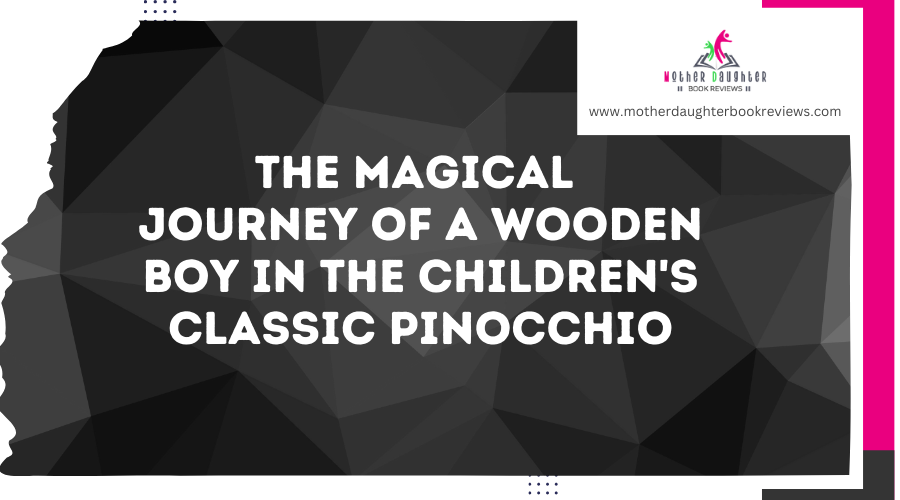The Magical Journey of a Wooden Boy in the Children's Classic Pinocchio

When you plunge into the enchanting tale of "Pinocchio," you'll follow a wooden puppet brought to life by a fairy's magic. Geppetto, his creator, dreams of having a real boy, and Pinocchio sets off on an adventure filled with misadventures and moral lessons. His curiosity often leads him astray, but with guidance from the Talking Cricket and the Blue Fairy, he learns about honesty and responsibility.
Facing temptations like Pleasure Island and the challenge of rescuing Geppetto, Pinocchio's path is full of trials that shape his quest to become a real boy. Uncover how his transformation unfolds.
The Birth of Pinocchio
The story of Pinocchio often begins with an elderly woodcarver named Geppetto, who, one day, decides to create a wooden puppet. You can picture him carefully crafting each part, pouring his heart into this wooden figure. Pinocchio's origins are rooted in this act of creation. Geppetto's skilled hands shape the puppet from a single piece of enchanted wood, which already hints at the magic to come.
Once the puppet is complete, something extraordinary happens. A fairy, drawn by Geppetto's fervent wish for a son, breathes life into the wooden puppet. This magical transformation turns the lifeless wood into a living being, and Pinocchio is born. You can imagine the astonishment and joy Geppetto must feel when his creation starts to move and talk.
This transformation is more than just a physical change; it's the beginning of Pinocchio's expedition to becoming a real boy. The wooden puppet's origins and subsequent magical transformation set the stage for the many adventures and lessons that will follow. Through these events, you're introduced to a world where dreams, despite their wooden beginnings, can indeed come to life.
View this post on Instagram
As Pinocchio continued his expedition, a vital encounter awaited him: the Talking Cricket. This small yet wise creature became a significant character in Pinocchio's quest. The Talking Cricket wasn't just a voice in the background; he was there to impart moral lessons and guide Pinocchio through his trials. You quickly realize that the Cricket's role is indispensable as he continuously tries to steer Pinocchio towards the right path. Through these interactions, you see how the Talking Cricket embodies the voice of reason, emphasizing the importance of listening to wise counsel. His presence in Pinocchio's life is a constant reminder that moral lessons, although sometimes difficult to follow, are vital for personal growth and making the right choices. Amid Pinocchio's adventure, he faced an alluring but perilous challenge: Pleasure Island. This enchanted haven promised an escape from reality, where childish desires could run wild without rules or responsibilities. The island's allure was irresistible to Pinocchio, symbolizing the temptation's lure that many face. Here, children could indulge in every whim, but hidden beneath the surface were grave consequences awaiting those who succumbed. On Pleasure Island, the loss of innocence was palpable. The initial joy and freedom came at a high cost. Pinocchio, along with his friend Lampwick, found themselves swept away by the island's enchantment, unaware of the moral dilemmas they'd soon confront. The island seemed like a paradise, but it was a deceptive trap designed to exploit their vulnerability. Though the allure of Pleasure Island had already shown its peril, the true cost of deceit was still to come. As you follow Pinocchio's expedition, you quickly realize that lying leads to a series of unfortunate events. Each lie he tells makes his nose grow longer, serving as a poignant symbol of how dishonesty can distort your true self. The Blue Fairy's guidance plays an vital role in Pinocchio's path toward becoming a real boy. Her wisdom provides the foundation for his self-discovery expedition. Through magical transformations and enchanted encounters, she teaches him critical guidance lessons that shape his moral compass. The Blue Fairy's nurturing love offers Pinocchio the support he needs, especially when overcoming challenges that test his character. Each transformative moment orchestrated by the Blue Fairy serves as a significant point in Pinocchio's development. She doesn't just fix his mistakes; she empowers him to learn from them. Her fairy tale influence is evident when she turns Pinocchio's lies into opportunities for growth, using these moments to instill honesty and integrity. The Blue Fairy's wisdom extends beyond mere magical interventions. She embodies patience and understanding, guiding Pinocchio with a gentle but firm hand. Her guidance lessons often come at times when Pinocchio is most vulnerable, making her presence a guiding light of hope and moral guidance. Pinocchio's quest to save Geppetto marks a significant chapter in his adventure, filled with peril and determination. As he initiates this rescue mission, you're struck by the depth of his commitment to the father-son bond that drives him forward. Imagine yourself in Pinocchio's wooden shoes, braving the unknown to save someone you deeply care about. Each obstacle reinforces the strength of Pinocchio's bond with Geppetto. You can see how this expedition isn't just about finding Geppetto; it's also about Pinocchio finding himself. The lengths he goes to for his father highlight the deep love and loyalty that defines their relationship. This rescue mission showcases Pinocchio's growth and his unwavering determination to reunite with Geppetto, setting the stage for further adventures. As he finds himself trapped in the dark, damp belly, the enormity of his predicament dawns on him. The whale symbolism in this part of the story is rich and multifaceted. It represents a place of deep reflection, where Pinocchio must confront his fears and shortcomings. In the whale's belly, Pinocchio undergoes significant character transformation. Initially driven by a simple desire to find Geppetto, he begins to realize the importance of courage, responsibility, and selflessness. This confined space becomes a crucible for his development. You can almost feel his growing determination as he devises a plan to escape and rescue Geppetto. The whale's belly is not just a physical space but a metaphorical one where Pinocchio's transformation is catalyzed. It challenges him to grow beyond his wooden limitations and adopt the qualities that make one truly human. Through this harrowing experience, Pinocchio proves that even in the darkest places, profound growth and change are possible. Emerging from the whale's belly, Pinocchio faces his ultimate challenge: becoming a real boy. This concluding step is more than just shedding his wooden identity; it's about proving his moral growth. You've followed his adventures, and now you see him grapple with what it truly means to be human. These qualities are vital for Pinocchio to leave behind his wooden identity and accept humanity. You've watched him evolve from a mischievous puppet to someone capable of genuine love and sacrifice. The Blue Fairy's magic isn't the only thing that transforms him; it's his inner change that matters most. In Pinocchio, the magical journey of a wooden puppet is far more than an enchanting tale—it's a story of transformation, moral growth, and the power of love. From his mischievous beginnings to his ultimate transformation into a real boy, Pinocchio's adventure is filled with trials that teach him about honesty, responsibility, and sacrifice. With guidance from the Blue Fairy and lessons learned through mistakes, Pinocchio evolves from a naïve puppet into a courageous, selfless individual. His journey to save Geppetto and his ability to embrace his humanity demonstrate that true change comes from withinGeppetto's Dream
Pinocchio's First Missteps
The Talking Cricket
The Temptation of Pleasure Island
The Consequences of Lies
The Blue Fairy's Guidance
The Journey to Save Geppetto
The Belly of the Whale
Becoming a Real Boy
Wrapping Up




